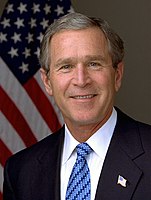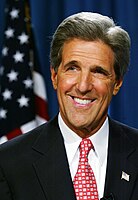| ||||||||||||||||||||||||||
| Turnout | 70.6% (of registered voters) 65.3% (of voting age population) | |||||||||||||||||||||||||
|---|---|---|---|---|---|---|---|---|---|---|---|---|---|---|---|---|---|---|---|---|---|---|---|---|---|---|
| ||||||||||||||||||||||||||
 County results
| ||||||||||||||||||||||||||
| ||||||||||||||||||||||||||
| Elections in Ohio |
|---|
 |
The 2004 United States presidential election in Ohio took place on November 2, 2004, and was part of the 2004 United States presidential election. Voters chose 20 representatives, or electors to the Electoral College, who voted for president and vice president. Ohio was won by incumbent President George W. Bush by a 2.10% margin of victory. Prior to the election, most news organizations considered Ohio as a swing state. The state's economic situation gave hope for John Kerry. In the end, the state became the deciding factor of the entire election. Kerry conceded the state, and the entire election, the morning following election night, as Bush won the state and its 20 electoral votes.
The close contest was the subject of the 2006 documentary film ...So Goes the Nation, the title of which is a reference to Ohio's 2004 status as a crucial swing state. Had Kerry won the state, he would have won the presidency with 272 electoral votes despite losing the popular vote, and would have been the first Democrat to achieve this feat; this also meant that if Bush lost the state, he would have lost re-election with 266 electoral votes, and been a one-term president despite winning the popular vote, which would have made him the first Republican to achieve this feat.
As of the 2024 U.S. presidential election, this is the last time Ohio voted more Democratic than the nation as a whole, as well as the last time where Hamilton County, the home of Cincinnati, voted for a Republican presidential candidate. Bush became the first Republican to win the White House without carrying Stark County since Benjamin Harrison in 1888.


